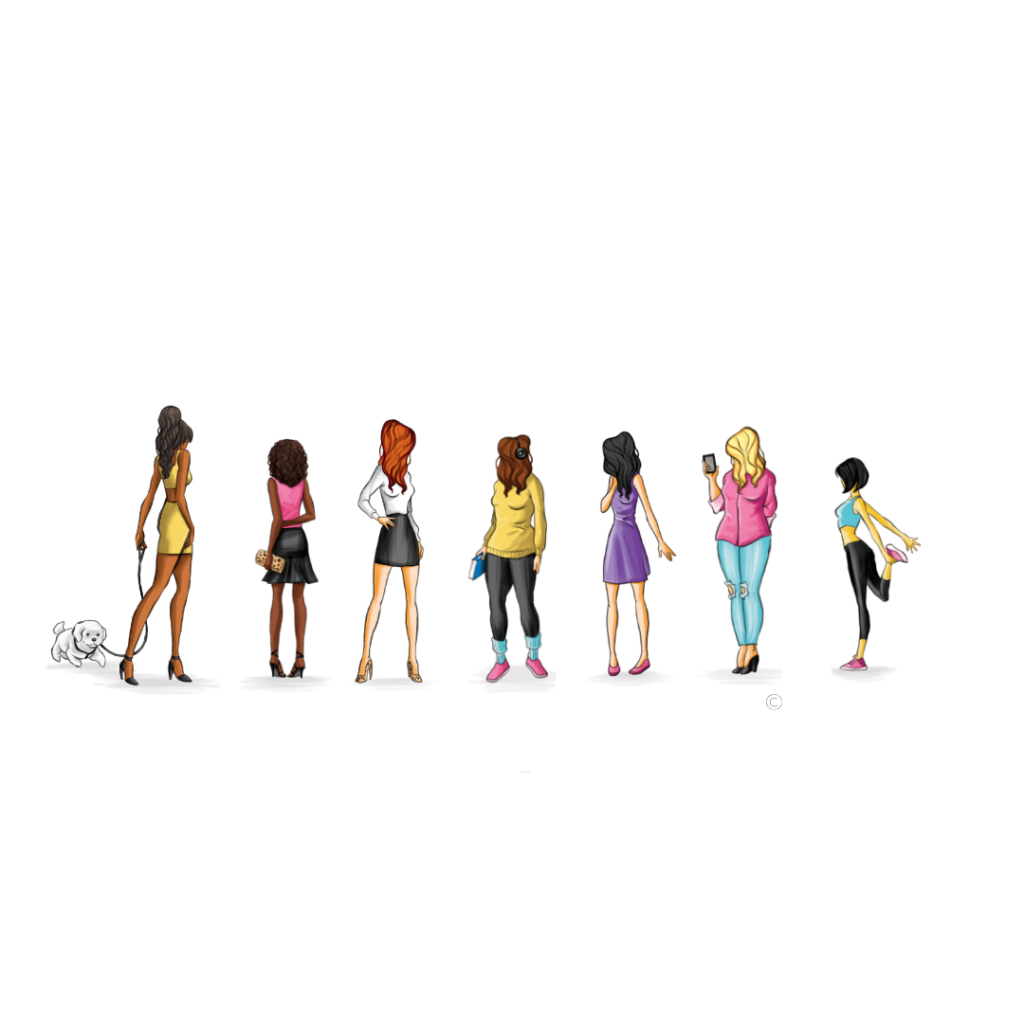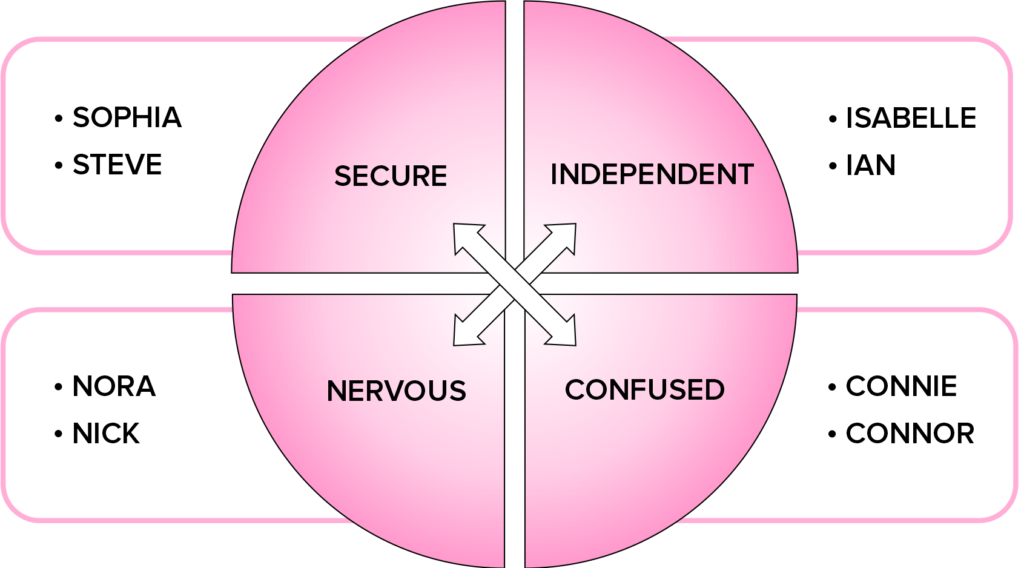Love Styles
Understanding Who you are, Who your Partner is?
You learned how to love as a result of the relationship between you and your primary caregivers, most likely your parents. Children attach in different ways to their caregivers, which creates your attachment style. In your family, you also learned how to communicate if you are a high expressive person you are more vocal and verbal if you are a low expressive person you keep things to yourself. The combination of your attachment style and your communication style is called your LOVE STYLE. This is the way you connect with romantic partners. Your love style will dictate what you need from a partner and how you express your needs.

There are four Primary Love Styles
- Secure Independent
- Avoidant Nervous
- Anxious Confused
- Disorganized
Know Yourself
Together this makes for seven possible love styles. Because here’s the thing: your Love Style is not your fault. Who you are and how you love is your pattern that was established long ago, like before you were two years old.

Your Love Style
I have seven characters that embody each love style
Secure
- Sophia/Steve – High Expressive
- Sophia/Steve – Low Expressive
Independent
- Isabelle/Ian – High Expressive
- Isabelle/Ian – Low Expressive
Nervous
- Nora/Nick – High Expressive
- Nora/Nick – Low Expressive
Confused
- Confused Connie/Connor
While you may be curious to know more about all seven love styles it is most important to focus on your own love style and that of your partner. If you are a Nervous Nora type and you want to become more like Secure Sophia my course Find Your Flavor – can make all the difference in leveling up your love life.
Attachment Theory
The theoretical background for my Love Style quiz and the partner quizzes were derived from the work of Doctor John Bowlby. Dr. Bowlby discovered Attachment Theory in the 1960s. He studied infants and noticed when a child did not bond to their caregivers at a young age they would struggle later in life to form healthy attachments. Attachment Theory, now called Attachment Science, studies how your attachment style in your romantic relationships is directly related to your early childhood attachments. Attachment Theory has been studied and documented over many years in a variety of settings.
Your early attachment can affect you in two primary ways:
- How your nervous system is wired: how you calm down under stress.
- Who you rely on in your relationships and how much connection is comfortable for you.
Expressiveness: Is considered the degree of effort you make when revealing your emotions to your partner. High expressive people are more likely to reveal emotions, either negative or positive to their partner, and low expressive people are less likely to share particularly negative emotions.
Attachment Style + Expressiveness = Your Love Style. Knowing who you are in your relationships can help you understand why you might back down during emotional conflicts or why you confront things head-on. By increasing your awareness of your style and knowing your partner’s style you can begin to look at your relationships in a new light.

Know Your Partner's Love Style
When partners meet each other’s needs (often what you experience at the beginning of a relationship), you feel understood and safe. Over time, people tend to fall back into old patterns. If either you or your partner does not feel understood, there can be friction, unhappiness, or a loss of love. The results from my Partner Quiz can help you understand how to meet your partner’s needs, especially under stress.
In Attachment Science, love is not one size fits all. People have different needs and wants as a result of their Love Style.
Now What?
The ideal circumstance would be for you to take the Love Style Quiz for yourself and your partner and for your partner to do the same. Focus on the profile that you received versus the one your partner received. What matters most is how you see your partner. Take my new course Find your Flavor (coming soon) and learn how best to be there for your partner.
Do You Have Similar Or Opposite Love Styles
Similar: If you and your partner fall into the same quadrant: Secure, Isolated, Nervous, or Confused you will have similar needs and wants. For example, if both you and your partner have Nervous love styles you both will need to be heard understood and validated. You both will also want to keep things positive in your relationship and seek consistency from each other.
You may fall in the same quadrant and yet when it comes to expressiveness one may be high and the other may be low expressive. These differences may be subtle but have a significant effect on your communication skills. Make sure that you understand and talk through your differences.

Opposite: If you and your partner are opposites, say you are Nora and your partner is Ian, this doesn’t mean you are not compatible. It does however mean that both of you will need radically different things, especially under stress. During stress, Ian needs space and time to think things through while Nora needs to connect and get the validation to calm down. Neither one is right or wrong, they are merely different. Becoming more secure in your relationship is important. The goal is to learn to be attuned and accommodate your partners’ differences. In a secure relationship, despite differences, both partners get their needs met.
You may fall in the same quadrant and yet when it comes to expressiveness one may be high and the other may be low expressive. These differences may be subtle but have a significant effect on your communication skills. Make sure that you understand and talk through your differences.
Secure Relationship
Secure relationships are more similar than they are different. It doesn’t require two secure people, both people might be insecure at the start but over time as a couple, you move towards security. Two people can create a secure relationship regardless of your love profile. Healing can happen, but chances are it’s going to take time and you will need to be intentional. The idea is that you can “earn security.” On average it’s believed to take five or more years to happen, though it can take more or less time depending on circumstances. Some couples never become secure and break up, but this doesn’t have to be your outcome. Are you ready to make your relationship more secure?

Here are the ingredients for a secure relationship: Notice there is no ‘I’ in Secure. Think about your relationships as a ‘We’ or ‘Us’:
- Safety: both partners agree to be committed to the relationship and are monogamous
- Empathy: for your partner’s needs and reciprocal empathy for your needs
- Calm each other: knowing what each person needs to relax and unwind
- Understanding: your partner’s good intentions in their actions
- Repairing hurts: say I’m sorry when misunderstandings happen and correct mistakes
- Enjoy: each other and your relationship
If one person in the couple has a problem it becomes their partner’s problem as well. Two people need to be committed to the process. Couples therapy will go smoother when both people own their responsibility, are objective about their patterns, and are committed to changing and growing. The toughest lesson is often accepting your partner for who they are not who you want them to be.
In order to be more secure in your relationship consider the following shift. Instead of thinking of the golden rule: ‘Treat others the way you want to be treated.’ Try the Platinum rule: ‘Treat others the way they want to be treated.’ Once you figure this out the rest just clicks.
Finding and creating a secure relationship is worth the wait.
– Former Client
